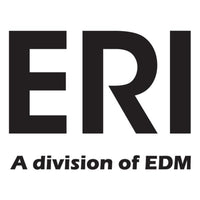Ultrasound imaging has long been a critical diagnostic tool in healthcare, enabling physicians to peer inside the human body without the need for invasive procedures. While ultrasound images can be digitally stored, they are commonly printed using specialized thermal ultrasound printers.
In this short guide, we'll discuss the role of ultrasound printers and how the technology works to translate ultrasound waves into tangible images that can be used for diagnostic purposes or for patients themselves, like expectant mothers, to keep.
The Basics of Ultrasound Imaging
Before delving into ultrasound printers, let's give a quick recap on the fundamentals of ultrasound imaging. Ultrasound employs high-frequency sound waves to create images of internal body structures.
The process is painless, non-invasive, and does not involve ionizing radiation, making it a safe option for various medical applications, including monitoring pregnancy, diagnosing diseases, and guiding surgical procedures.
Traditionally, the images generated through ultrasound are displayed on screens, and while this has been an effective means of interpretation, it has its limitations. This is where ultrasound printers come into play.
Ultrasound Printers: A Breakdown
Ultrasound printers, also known as thermal printers, are devices designed to convert digital ultrasound images into tangible, hard copies.
These printers employ a combination of ultrasound technology and printing mechanisms to create physical representations of what was once seen solely on a monitor.
The result is an image that can be examined, shared, and stored in a more accessible and tangible format.
The printers are intricate devices comprised of crucial components, each playing a pivotal role in the process. At the heart of this technology is the Digital Processing Unit, which acts as the brain of the system, diligently processing the digital ultrasound data. This unit not only ensures the data is optimized for printing but also enhances image quality and clarity.
Working hand-in-hand with the processing unit is the Printing Mechanism, which includes the printing head and paper feed mechanism, resembling the operation of traditional printers. This component is responsible for the physical manifestation of the ultrasound image on paper, guaranteeing that the hard copy faithfully represents the digital data.
Of course, the key component to all of this is your ultrasound transducer. Without the transducer, there would be no information to transmit to the printer, so taking good care of this piece of equipment is critical.
It is the synergy between these components that enables ultrasound thermal printers to produce high-quality prints that can be of clinical value.
The use of ultrasound printers entails several advantages for clinicians and patients alike. Most notably, a printed image on thermal paper provides healthcare professionals with a concrete medium for collaboration, enabling efficient knowledge sharing among colleagues, and ensuring a comprehensive record of each patient's ultrasound examination.
This accessibility extends further to the archiving of printed images for future reference, enhancing the ability to track disease progression and gauge the effectiveness of treatment regimens over time.
Additionally, the benefits extend to the realm of patient engagement. For example, expectant mothers can receive a copy of their baby ultrasound and take it home to share with family and friends.
This newfound connection between patients and their healthcare journey not only empowers them but also strengthens the doctor-patient relationship, ultimately contributing to more informed healthcare decisions and improved outcomes.Advancements in Ultrasound Printing Technology
Recent years have witnessed significant advancements in ultrasound printing technology, primarily focused on improving image quality, precision, and convenience. Innovations include:
3D Printing: Some ultrasound printers are capable of generating three-dimensional models of anatomical structures, which can be invaluable for pre-surgical planning and medical education.
Wireless Printing: Wireless connectivity allows for seamless integration with digital ultrasound systems, making the printing process more efficient.
Portable Ultrasound Printers: The development of portable ultrasound printers enables medical professionals to produce images at the point of care, reducing the time and cost associated with centralized printing facilities.
Ultrasound thermal printers are an excellent way to visualize and interpret ultrasound data. By creating tangible images, they offer a valuable tool for medical professionals, patients, and researchers. As technology continues to evolve, we can anticipate more accessible, precise, and cost-effective ultrasound printing solutions, further enhancing the practice of medicine and expanding their applications into new domains.

